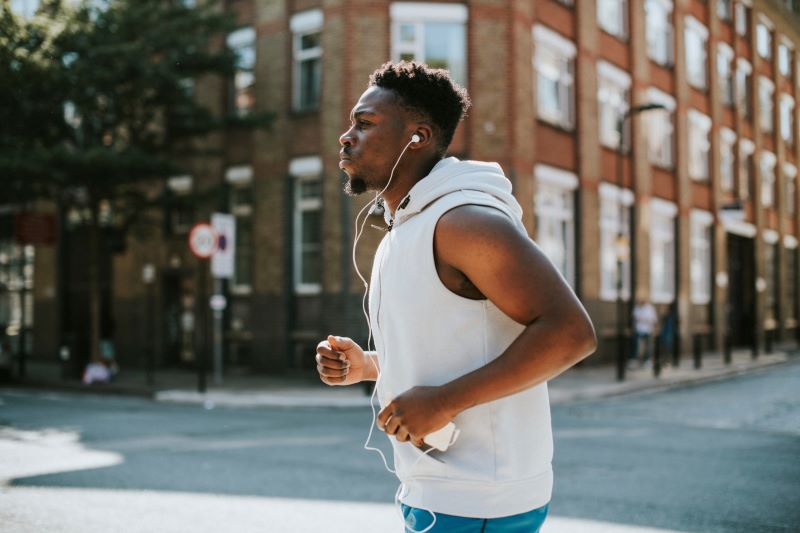Light Therapy May be a Suitable Addition to Provoked Vestibulodynia Treatment

Provoked vestibulodynia (PVD) can be explained by pain experienced at the vaginal opening (vulvar vestibule) when touched, or when pressure is applied. Around one out of ten women will experience PVD (prior to menopause), which can also cause poor sexual function and quality of life. There are some pain management techniques as well as medical treatments that can potentially completely eliminate symptoms.
Some experimental therapies may be beneficial and are being tested for their effectiveness in managing PVD. One is photobiomodulation therapy (PBM), which involves a cold laser probe and uses red or near-infrared light applied to the injured tissues. It’s believed that this kind of light therapy sparks metabolism in the affected cells, which would then help produce more endorphins, growth hormones, protein, collagen, and cellular energy; all of which are beneficial to tissue healing and cell regeneration. At the same time PBM is thought to reduce inflammation, and the body mechanisms that cause inflammation.
In order to test the efficacy of PMD in this capacity, researchers conducted treatment on thirty pre-menopausal women. Of these, 16 received the full PMD procedure, and the other 14 received the control: a fake procedure with no effective light emitted from the probe used. All 15 weekly sessions lasted 45 minutes and were followed by a recording of pain measured by “pressure pain threshold” (PPT) administered by clinicians and measured in grams of pressure tolerated, as well as a “tampon test.” This involved the participant inserting and removing a dry tampon without lubricant or other assistance in a secluded room and recording their pain after on a scale of 1-10.
Main Findings
Researchers found that pain sensitivity reduction was greater in the test group (real PBM) than in the control group (placebo). The test group experienced a significant increase of 77.2g PPT, while the control group experienced a slight increase of 15g PPT. Researchers suggest this slight increase in the control group may be due to the placebo effect.
The tampon test revealed a similar trend. On a scale of 1-10, the test group’s responses dropped significantly, by 2.1 points, while the control group’s responses decreased only marginally in comparison, by 1.1 point. Again, this similarity in pain perception between the two groups may be due to the placebo effect.
Midpoint Testing and Overall Satisfaction
After eight sessions, there were significant improvements in pain tolerance from both groups, which suggests that PBM should be carried out for eight weeks at least in order to be fully effective. Additionally, 13% of the test group reported that they felt “much better” after the full course of treatment, compared to 0% of the control group. However, most patients admitted they felt only “better” or “about the same” after either the real or fake PBM treatments.
Conclusion
Overall, researchers found that PBM was significantly effective in treating PVD and improving pain sensitivity in pre-menopausal women. However, clinicians and patients should be mindful of the small sample size and short follow-up period involved in the study, which would deter claims regarding its generalizability and long-term efficacy.
Despite this, adherence to the procedure was very high, with only one participant dropping out, and one participant skipping a session due to personal injury. Because of this and the high satisfaction rates, researchers believe PBM may be a viable and effective procedure to include in a multidisciplinary approach to PVD treatment.
References:
I Antonio, F., Pukall, C., & McLean, L. (2025). Photobiomodulation therapy for the treatment of vulvar pain among those with provoked vestibulodynia: A randomized controlled trial. The Journal of Sexual Medicine, 22(4), 579–587. https://doi.org/10.1093/jsxmed/qdaf011
You may also be interested in...
Other Popular Articles

What Is the Average Penis Size?
If you have ever wondered how your penis compares to others in terms of size, you are not alone. Many men are curious to know how their penises stack up compared to the average. Unfortunately, general curiosity can sometimes give way to full-on obsession and anxiety about penis size. This can be an unhealthy and often unnecessary fixation, especially because most men who think their penises are too small have perfectly normal-sized penises.

What Is Jelqing, and Does It Actually Work?
The term “jelqing” refers to a set of penis stretching exercises that some believe can make the penis bigger. Although the practice has gained attention and popularity in blogs and internet forums in recent years, there is no scientific evidence that it is an effective way to permanently increase the size of one’s penis. In fact, in some cases, jelqing may actually cause damage to the penis, so it is a good idea to get all the facts before setting off to try it.

What Is Sensate Focus and How Does It Work?
Sensate focus is a technique used to improve intimacy and communication between partners around sex, reduce sexual performance anxiety, and shift away from ingrained, goal-oriented sexual patterns that may not be serving a couple.

Can Sex Reduce Menstrual Cramps?
The SMSNA periodically receives and publishes ‘guest editorials.’ The current article was submitted by Mia Barnes, a freelance writer and researcher who specializes in women's health, wellness, and healthy living. She is the Founder and Editor-in-Chief of Body+Mind Magazine.
Having sex while you experience menstrual cramps is healthy and can provide significant benefits. While it might not be the first activity that comes to mind when your PMS or period cramping begins, many people enjoy sex to reduce menstrual cramps, experience increased pleasure and benefit from other advantages. Learn more about having sex while menstrual cramps are happening and how it can help your body.

How Long Does It Take the Average Man to Ejaculate?
On average, it takes a man between 5 to 7 minutes to orgasm and ejaculate during sexual intercourse.

The Effect of Regular Aerobic Exercise on Erectile Function
Erectile dysfunction (ED) is the inability to achieve or maintain an erection sufficient for satisfactory sexual activity. As men get older, their erectile functioning may naturally decline due to changes in testosterone levels, cardiovascular functioning, and the potential development of other chronic medical conditions that become more common with age.
You are prohibited from using or uploading content you accessed through this website into external applications, bots, software, or websites, including those using artificial intelligence technologies and infrastructure, including deep learning, machine learning and large language models and generative AI.

